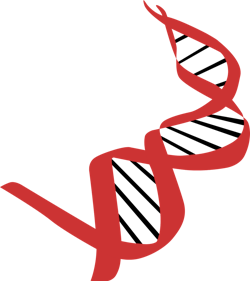Scientists at Yale Cancer Center have discovered new consequences of specific gene mutations that play a role in the development of myelodysplastic syndromes (MDS) and acute myeloid leukemia (AML), according to a news release.
Approximately half the patients diagnosed with MDS and 10% of patients with AML are found to have splicing factor mutations leading to ineffective blood cell production and malignancy. The new research revealed that mutations in the splicing factor U2AF1 improve the ability of the cancer cells to respond to and survive stress. The findings were published today in Molecular Cell.
Splicing factor mutations are particularly common in MDS and leukemia but also occur in other cancers. RNA splicing is a fundamental process accounting for cell diversity. The genetic code is transcribed from DNA to RNA molecules, which have to be processed to function properly. During splicing, RNA molecules are cut and select pieces are reconnected by splicing factors, including U2AF1. Mutations in splicing factors result in mistakes in this process.
In the new study, the research team demonstrated that mutations in U2AF1 alter RNA binding, splicing, and turnover of numerous RNAs, and enhance the formation of so-called stress granules, biomolecular condensates of RNAs and proteins, that mediate cellular adaptation to stress. This improved stress response may explain the clonal advantage of mutant cells and the development of MDS or AML.
“The discovery that U2AF1 mutations enhance stress granule formation may open novel avenues to prevent or treat myelodysplastic syndromes and acute myeloid leukemia,” said Giulia Biancon, PhD, Postdoctoral Associate in the Halene Laboratory at Yale Cancer Center and lead author on the paper.
“This discovery was possible by developing new experimental and analytic methods integrating big data. The mechanism of enhanced stress granule formation was not easy to detect because it’s not caused by a single large change to one RNA molecule, but by the sum of many small changes to hundreds of RNA molecules,” said Toma Tebaldi, PhD, Assistant Professor at the University of Trento, Adjunct Assistant Professor at Yale School of Medicine, and co-senior author on the paper.
MDS are most common in patients over 70 years old and are conditions that can occur when the blood-forming cells in the bone marrow become abnormal. AML also starts in the bone marrow and is most commonly diagnosed in older patients, but most often it quickly moves into the blood, as well.
“Our finding that mutations in U2AF1 alter stress granule formation via aberrant RNA binding and splicing leads us to believe that this mechanism could underly the pathogenicity of the other common splicing factor mutations in MDS. If this is a more universal mechanism we could harness it for novel treatments for these diseases,” said Stephanie Halene, MD, PhD, Chief of Hematology at Yale Cancer Center, Arthur H. and Isabel Bunker Associate Professor of Medicine (Hematology), and senior author on the paper.

